Are you curious about the orange-colored birds you’ve observed in your garden or while walking in the street?
Well, wonder no longer, this article will assist you in identifying orange birds across America.
All of these birds have had some orange color, which can be prominent and dazzling or more subtle and less dominating.
Then there is no need to wait anymore to see how many orange birds you can spot.
| Image | Name |
|---|---|
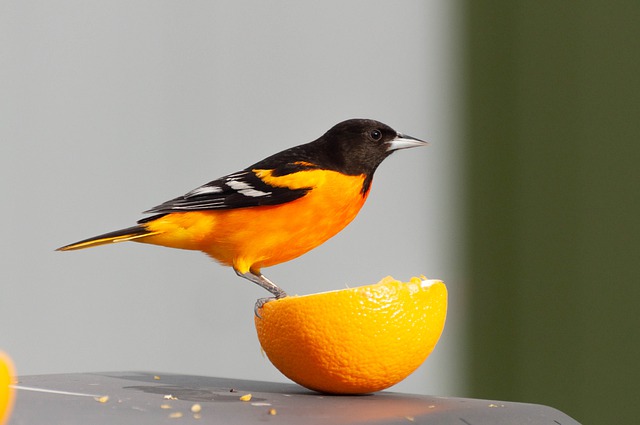 | Baltimore Oriole |
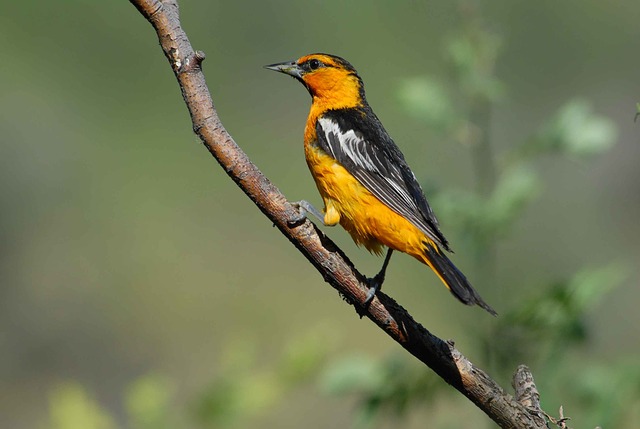 | Bullock’s Oriole |
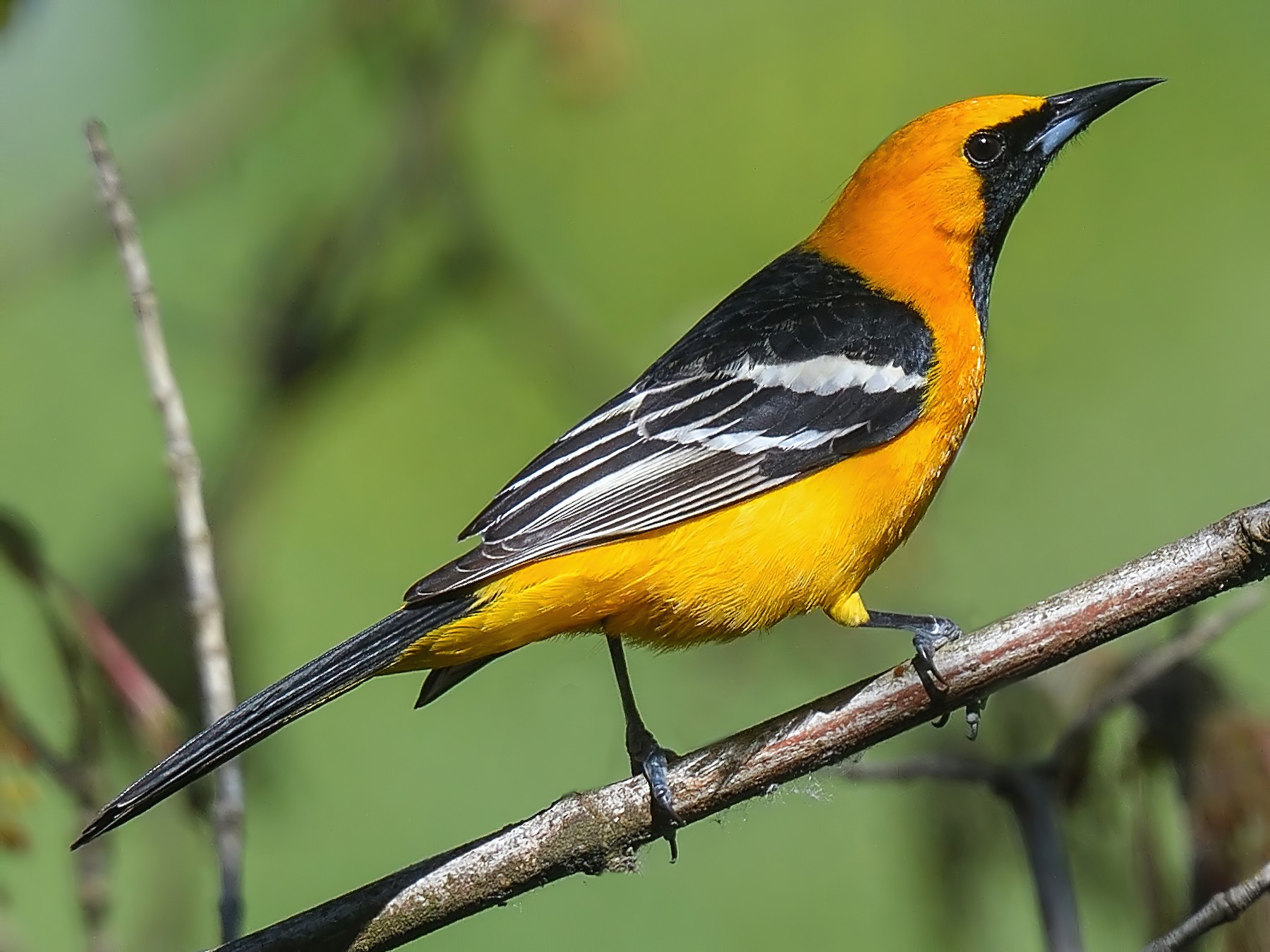 | Hooded Oriole |
 | Orchard Oriole |
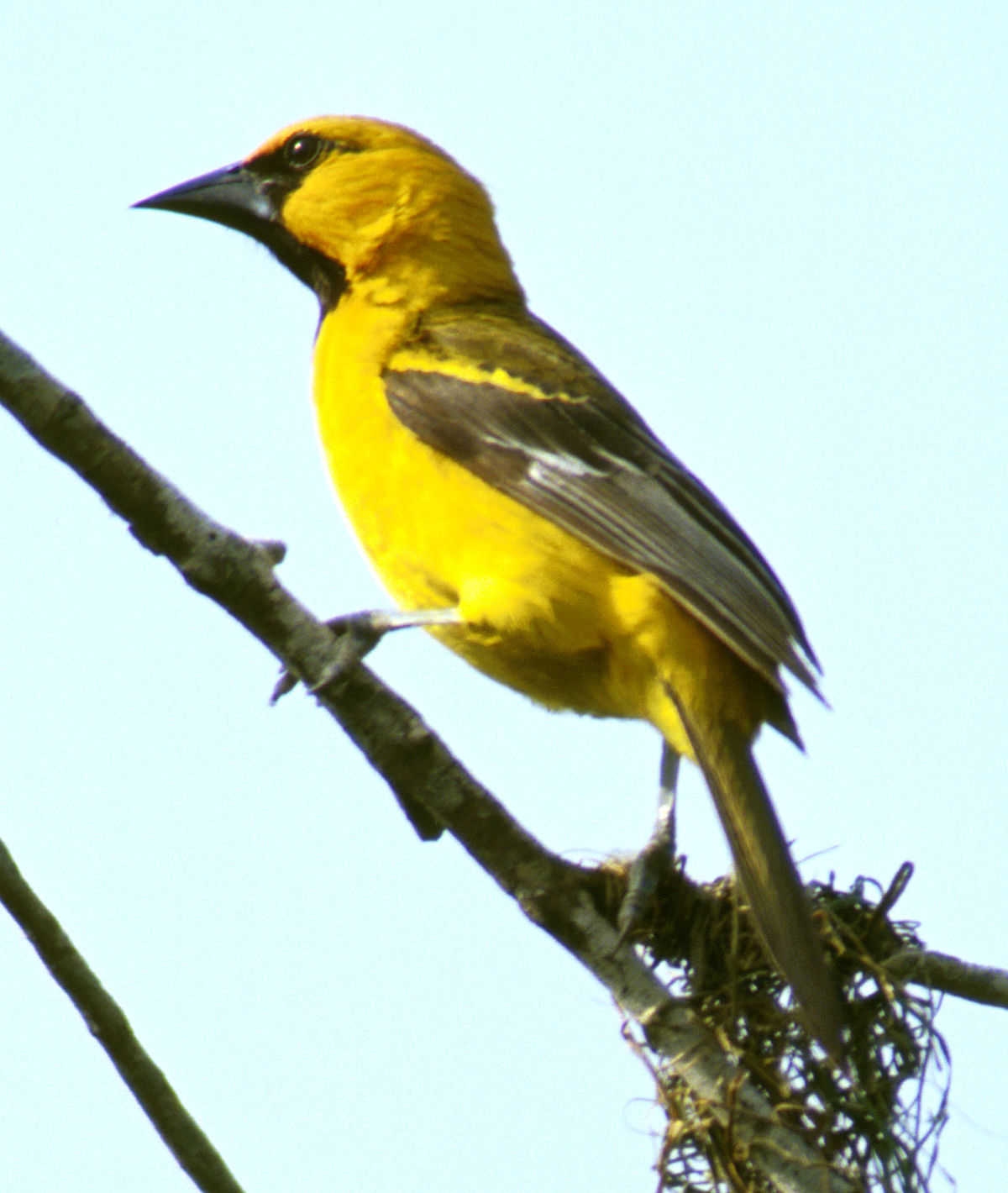 | Altamira Oriole |
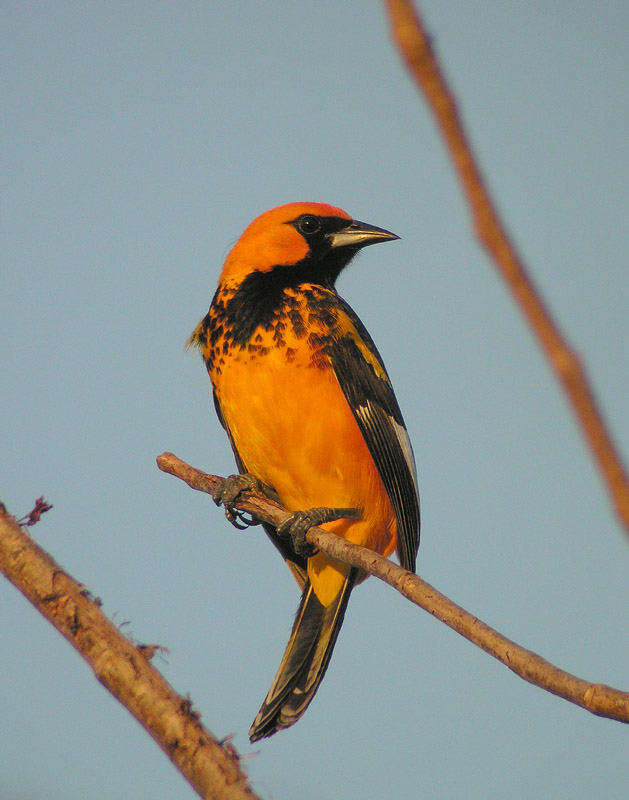 | Spot-breasted Oriole |
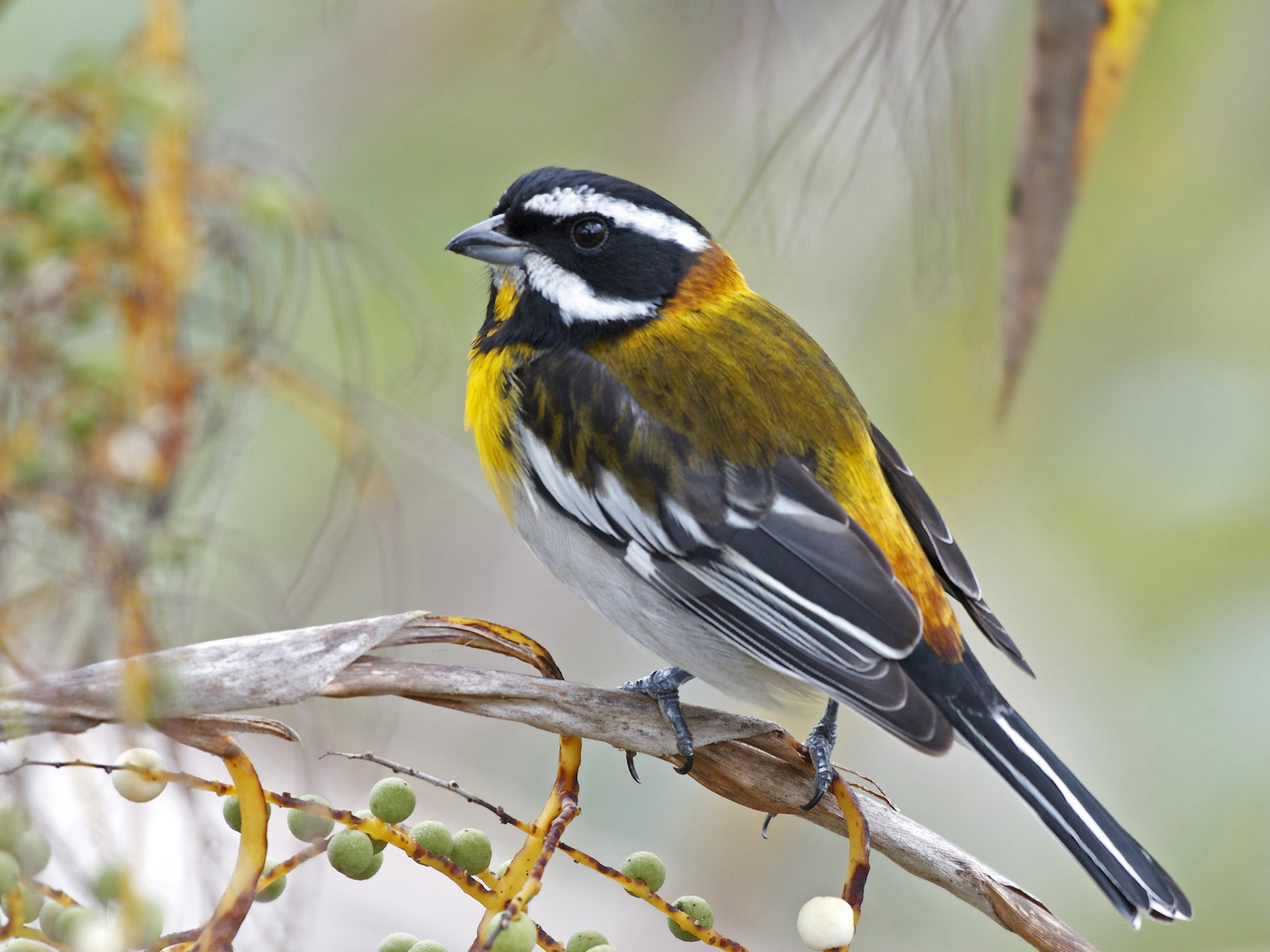 | Western Spindalis |
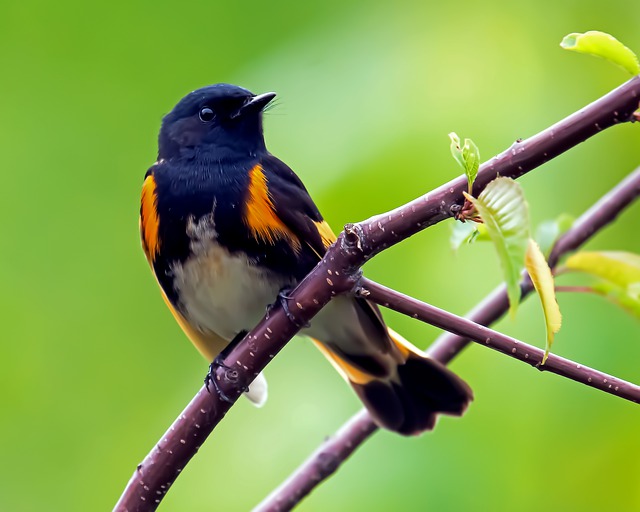 | American Redstart |
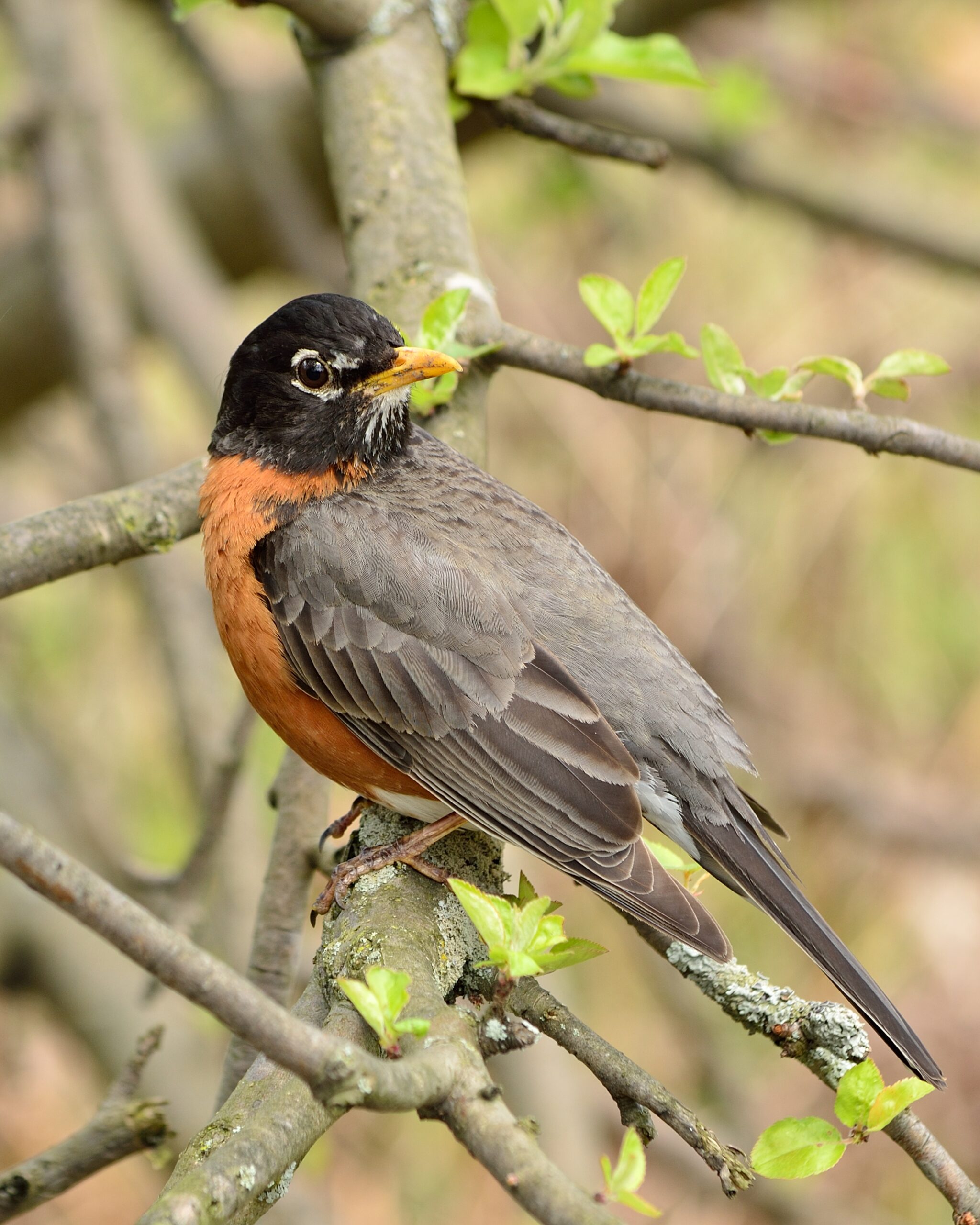 | American Robin |
 | Eastern Towhee |
Most Common Orange Birds in America
1. Baltimore Oriole

Baltimore Orioles are a bright symbol of spring across North America’s east. Adult males have brilliant black and orange wings having white bands on their wings.
The males possess orange chests and stomachs, as well as blackheads and upper backs.
Females are yellowish around the head and below and have brownish-yellow backs and grayish-brown wings. They are among one of the blackbird family members and are about the size of a Robin but slightly more slender.
Breeding begins in April throughout the Central and Eastern States, as well as the Southern and Central Canadian provinces and near the US border.
Baltimore Orioles typically spend the winter across the Caribbean, Florida, and Central America, departing as early as July.
They weave beautiful fiber-woven dangling bag-like nests.
Habitat & Food
Baltimore Orioles can always be spotted scavenging for berries and invertebrates along riverbanks, woodland borders, and open forests, as well as in back gardens and parkland.
Their food consists of insects such as grasshoppers, beetles, and crickets, along with snails and spiders, and they assist in the consumption of nuisance species.
They consume multiple fruits, including bananas, cherries, mulberries, oranges, and raspberries, and can cause damage to crops.
Try oranges split in half on a station feeder or hung from trees to entice numerous Baltimore Orioles visiting your backyard. Plants that provide fruit and nectar, such as trumpet vines, raspberries, and crab apples.
| Scientific name | Icterus galbula |
| Length | 17 to 19 cm (6.6 to 7.5 in) |
| Wingspan | 22 to 30 cm (9.2 to 11.8 in) |
| Weight | 30 to 40 g (1.2 to 1.4 oz) |
2. Bullock’s Oriole

Male Bullock’s Orioles appear brilliant orange having black and white wing patterns and a black crown.
Females and juvenile birds have duller backs and golden heads, chests, and tails.
Bullock’s Orioles spend the entire winter throughout Mexico and breed mostly in the western portion of the United States. Their nests are made of wool, hair, and grass and can take a maximum of fifteen days to build.
They may be spotted in parks and open forests, and they’ll visit back gardens in search of fruit, nectar, and grape jelly feeders.
| Scientific name | Icterus bullockii |
| Length | 17 to 19 cm (6.7 to 7.6 in) |
| Wingspan | 31 cm (12.3 in) |
| Weight | 29 to 43 g (1.2 to 1.5 oz) |
3. Hooded Oriole

Male Hooded Orioles are brilliant yellow to orange in color, having black necks and upper back. Females and babies appear yellower and have grey wings. Females do not have black facial marks.
Male Hooded Orioles within Texas are orange, whereas that further west appears yellow.
They mate mostly in the southern states of the United States, where they build dangling nests on the underside of the leaves of palm fronds.
They spend the winter near Mexico, and others spend the entire year in Central America and on the Gulf Coast of Mexico.
Due to the abundance of nectar feeders, many Hooded Orioles reportedly avoided migrating beyond southern US states.
Habitat & Food
They like arid open places, particularly near palm palms. Their nests are about 20 feet above the ground and are made of a dangling basket made of grasses and plant material.
To entice orioles, they might visit nectar feeders or consume fruit.
| Scientific name | Icterus cucullatus |
| Length | 18 to 20 cm (7.2 to 7.8 in) |
| Wingspan | 25 to 28 cm (9.2 to 11.0 in) |
| Weight | 24g (0.9 oz) |
4. Orchard Oriole

Male Orchard Orioles possess black backs and heads, as well as reddish-orange stomachs. Females have greenish-yellow entire coloration, darker on the back, lighter underparts, white wing bars, and darker wings.
In the summer, Orchard Orioles mate in the eastern and central United States before traveling south towards Central America and Mexico.
Orchard Orioles prefer open woodlands; however, they might also be spotted near farms, backyards, open shrubland, and riversides. They build pouch-like nests that dangle from the trees.
Their food consists primarily of insects such as ants, caterpillars, beetles, grasshoppers, and spiders. They will also sip floral nectar and consume food such as mulberries and chokeberries.
Check out this article on Orange Birds in Michigan.
Platform feeders or hummingbird feeders filled with sliced mangoes or oranges can entice Orchard Orioles towards your backyard. Plant native berry plants as well, such as chokeberries or mulberries.
| Scientific name | Icterus spurius |
| Length | 15 to 18 cm (5.8 to 7.1 in) |
| Wingspan | 25 cm (9.8 in) |
| Weight | 16 to 28 g (0.7 to 1.0 oz) |
5. Altamira Oriole

Altamira Orioles appear yellowish-orange overall color having black wings, backs, and tails. These orange-headed birds possess black around their eyes and across their throats.
Juveniles are much more yellow than black, with olive backs.
Except for the Texas Rio Grande Valley of Texas, Altamira Orioles are uncommon throughout the United States.
Search to find them in gardens at nectar or sunflower feeders or wildlife sanctuaries near southeastern Texas and along Central America’s Gulf Coast. They do prefer open forests and woodlands.
Altamira Orioles remain in pairs throughout life. Search for their spectacular dangling nests, which may be approximately two feet long.
| Scientific name | Icterus gularis |
| Length | 21 to 25 cm (8.4 to 9.8 in) |
| Wingspan | 36 cm (14.3 in) |
| Weight | 47 to 64 g (1.6 to 2.3 oz) |
6. Spot-breasted Oriole

Spot-breasted Orioles are typically orange and black in color, having white wing borders and black patterning on their orange chests.
They possess black on their wings, back, and tail, as well as around their breast and face. Juveniles are yellower, having black wings, backs, and tails.
Spot-breasted Orioles can be spotted throughout Florida and across the Gulf Coast, although they aren’t widely distributed in the United States. They are typically found along the Pacific Coast of Mexico and Central America.
They inhabit open forests and will visit back gardens in search of fruit and nectar.
| Scientific name | Icterus pectoralis |
| Length | 21 to 24 cm (8.4 to 9.4 in) |
| Wingspan | 32 – 37 cm (12.5 – 14.5 in) |
| Weight | 50 g (1.8 oz) |
7. Western Spindalis

Males of the Western Spindalis possess brilliant orange necks and white-and-black striped heads. Their backs are either black or greenish with a hint of orange. Females are much less brilliant, but their coloration and markings are comparable.
They are mostly spotted throughout the Caribbean, although they may also be observed across southern Florida. The Western Spindalis live across tropical and subtropical woodlands.
Western Spindalis are fruit-eating songbirds who typically eat seeds, insects, and berries. They construct a little cup-shaped nest from weeds and grass.
| Scientific name | Spindalis zena |
| Length | 15 cm (5.9 in) |
| Wingspan | 28 – 30 cm (11 – 12 in) |
| Weight | 21 g (0.74 oz) |
8. American Redstart

The majority of American Redstarts appear black featuring brilliant orange spots and a white abdomen. Females appear olive-gray and have yellow spots rather than black.
They get a large mating range that extends from eastern US states and Canada to northern US states and Canada. They might well be noticed throughout migration throughout the central states as well.
They could be observed eating insects in deciduous forests as well as berries such as magnolia and serviceberry near backyards and thickets.
| Scientific name | Setophaga ruticilla |
| Length | 11 to 13 cm (4.4 to 5.1 in) |
| Wingspan | 16 to 19 cm (6.4 to 7.5 in) |
| Weight | 6 to 9 g (0.3 to 0.4 oz) |
9. American Robin

American Robins are frequent around lawns, where they consume earthworms. Their backs and heads are black, having orange or red chests.
Because they roost inside trees throughout the winter, you seem to be more certain to encounter them in your yard starting in the spring.
Habitat & Food
American Robins may be encountered in a wide range of environments, including forests, woodlands, and mountains, as well as lawns, fields, and parks. Insects, earthworms, snails, and fruit are among their preferred foods.
Sunflower seeds, peanut hearts and suet, mealworms, and fruit can all be used to entice more American Robins into your backyard.
Platform feeders or food strewn on the soil are preferable. Plant berries-producing native plants like hawthorn, dogwood, juniper, and sumac as well.
| Scientific name | Turdus migratorius |
| Length | 9.1 – 11 in |
| Wingspan | 12 -16 in |
| Weight | 2.7 oz |
10. Eastern Towhee

Male Eastern Towhees are about the proportions of a Robin and have a black head, neck, and throat, long tails, reddish-orange flanks, and a white tummy. Females remain identical except for the color of their fur, which is brown rather than black.
Eastern Towhees can be seen throughout the year in the southern states, although birds farther north migrate south during winter, and they may only be seen on the western limit of their habitat in the winter.
Eastern Towhees can be observed near the borders of thickets and woodlands, digging in the vegetation.
Eastern Towhees may visit feeders for falling seeds if your backyard has overgrown boundaries. They will also approach platform feeders for hulled sunflower seeds, cracked corn, millet, and black oil sunflower seeds.
| Scientific name | Pipilo erythrophthalmus |
| Length | 17.3 to 23 cm (6.8 to 9.1 in) |
| Wingspan | 20 – 30 cm (7.9 – 11.8 in) |
| Weight | 1.1 to 1.9 oz |
If interested check out this article on Orange Chested Birds and Birds with Orange Beaks.
Conclusion
We hope you liked our brief excursion into the realm of orange birds and, maybe, discovered a species or two to keep an eye out for.
You can see that the hue exists on a wide variety of birds throughout various parts of America.
FAQ
What sort of bird has primarily orange feathers?
The Baltimore oriole (Icterus galbula) is among the most common and well-known orange birds that spend the summer mostly in eastern and central United States and Canada, as well as migrating towards Florida, the Caribbean, Mexico, and South America during the winter.
Last Updated on March 22, 2023 by Lily Aldrin
